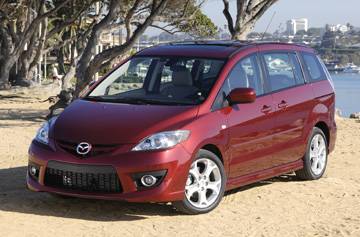
LOS ANGELES – Mazda Motor Corp. enjoys a great degree of anonymity when it comes to its relationship with Ford Motor Co., a top U.S. executive says.
“You’d be surprised how many people have no idea that Ford has a (33.4%) controlling stake in Mazda,” Mazda North American Operations President and CEO Jim O’Sullivan says. “If you did a focus group, and asked them if Mazda had a relationship with Ford, most would say, ‘no.’ They don’t know, and I don’t think most of them care.”
What consumers care about is Mazda’s reputation as a producer of value-added cars with good driving dynamics, he says.
Still, Mazda’s relationship with Ford is a strong one and beneficial to both auto makers, O’Sullivan says, noting it permits Mazda to take on the likes of Toyota Motor Corp. and Honda Motor Co. Ltd., while leaving Ford free to go toe to toe with its domestic rivals.
“By model, it’s the best relationship of anyone in the industry,” O’Sullivan tells Ward’s in an interview here.
“There’s a lot of these joint ventures that have gotten divorces over the years, but our relationship with Ford continues to get stronger every day and every year,” he says, noting the partnership allows the two auto makers to leverage greater economies of scale in purchasing raw materials and components.
To highlight the close connection, O’Sullivan points to the number of Ford executives who are Mazda alumni, including Mark Fields, president-The Americas; Lewis Booth, executive vice president-Ford of Europe and Premier Automotive Group; and John Parker, executive vice president-Asia/Pacific and Africa.

“The guys running Ford’s top three business groups are Mazda graduates,” he says. “So there’s a lot of institutional knowledge as to what Mazda can and can’t do.”
Meanwhile, Mazda currently is on pace for a record sales year and expects substantial growth next year, O’Sullivan says, crediting the dealer network for much of the brand’s success.
“Four to five years ago, we had the weakest distribution network in the U.S.,” he says. “Eighty percent of our dealers were dual franchises. We’re at 51% today, and over 70% of our U.S. sales are through exclusive (Mazda) dealers.”
The next-generation Mazda6 due at U.S. dealerships in late 2008 is a “big priority for us” and will account for most of the auto maker’s anticipated growth next year, along with a refreshened version of the Mazda5 cross/utility vehicle, O’Sullivan says.
“We’re not anticipating double-digit (growth overall), but steady, incremental growth,” he says, noting that a better supply of the capacity-constrained Mazda3 small car would help.
“We still can’t get enough of them,” he says. “There are no big rebates on them and the car’s aged, but it’s outselling the Nissan Sentra, which is brand new.”
Last year, Mazda sold just over 97,000 Mazda3s, and so far this year more than 100,000 have been delivered.
On the opposite end of the spectrum, the Mazda5 has performed poorly in North America, with sales off 56.9% at 1,390 units through October, Ward’s data shows.
Despite its lackluster showing, there are no plans to pull the plug on the Mazda5 in North America, O’Sullivan says, noting sales in Asia and Europe are strong.
“There’s a future for the Mazda5,” he says. “We think that market is going to continue to grow, and the great thing is we source it globally and do well with it, so any volume we can pick up (in North America) is just incremental business.”
O’Sullivan says his main objective is building on Mazda’s position as a niche-vehicle marketer.
“We have to remember who we are,” he says. “We’re not a big car company, and we don’t have to be the biggest.
“Who’s the most profitable car company in the world in terms of margins? It’s Porsche (AG), and they’re trying to buy (Volkswagen AG),” O’Sullivan says. “We’re a fun brand, and we’re staying focused on driving, styling and dynamics.”




